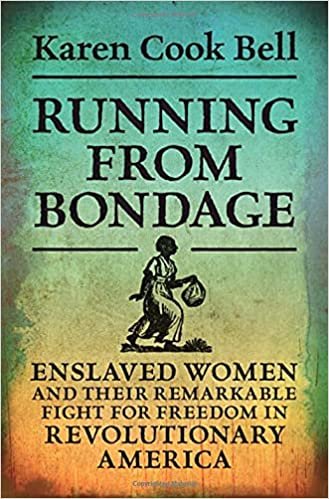US History Books on the American Revolution in 2021: Traditional Publishing vs. Self Publishing
What are the differences between traditionally published and self-published books on the American Revolution?
In part out of curiosity and in part to better advise my editing and author coaching clients, I set out on a journey to figure this out. I compiled data on every book published in 2021, entered it into a spreadsheet, and tallied up a bunch of findings on a legal pad. This time last year, chocolates got me through the task. As I write this now, it’s my favorite snack: potato chips.
What ultimately emerged was this post.
Scroll down to compare: the number of books published, cover color schemes and cover design, trim size, average price, page count, editions published, and dates of publication.
I hope this post will help authors, readers, book designers, and publishers. Feel free to pass it along.
Methodology: I included new nonfiction history books, for adult readers, on the American Revolution era (1763–1787). I browsed multiple retailers’ websites, searched WorldCat.org—(you can learn how to do research for a book using WorldCat by reading more here), and drew on my network to find the books and compile the data. I did not include reprints of classic books, second editions that were not substantially overhauled, or “trade paperback” editions of books initially published in hardcover in a previous year.
If writing an American history book is in your plans,
You can write, publish, and promote a great book. To do that,
Be sure to
opt in to my emails full of helpful advice and resources to empower you on your author journey
transform your manuscript or create a plan for your book with my editing and coaching services
take my digital course on self-publishing and have a step-by-step process to follow while you self-publish
Number of books
77 books by traditional publishing companies (compare with 64 in 2020 and 63 in 2019). Of the 77, 16 were published by university presses (compare with 13 in 2020).
39 self-published books (compare with 51 in 2020 and 35 in 2019)
116 books in total (compare with 115 in 2020 and 98 in 2019).
Cover color scheme
Traditionally published books use beige or multicolored covers most often.
Self-published books most often had multi-colored covers.
Of the traditionally published books, the dominant color of 40 percent of them was multi-colored, while 35 percent of them were beige. White, black, and dark blue covers were each accounted for 5 percent of the total. Beige covers were more common in 2021 than in 2020.
Of the self-published books, the dominant color of 36 percent of them was multi-colored, while 21 percent of covers were white, and 13 percent were beige. The percentage of multicolored book covers was almost identical to the year before. Self-published books were far more likely to have white covers than traditionally published books. And they were far less likely to have dark blue covers.
For both traditionally published books, white is rarely used and should rarely be used. It doesn’t pop on websites).
For both traditionally published books and self-published books, the following colors are seldom used, if at all: purple, blue, gray, gold/yellow, pink, and non-olive green.
Below are some examples of book covers with the beige color scheme.
Cover art
Traditionally published books are much more likely to include color portraits or paintings of an older creation, and when they use portraits, i.e., for a biography, there is often a “zoomed in,” close-up effect.
Self-published book covers sometimes look “busy” and cluttered, and when designed on Amazon Kindle Direct Publishing look very outdated. Self-published books were more likely to incorporate a flag into the cover design.
I found that about two thirds of traditionally published books had a painting or portrait on the cover (12 books, or 15 percent of all self-published covers—had an image that was “zoomed in”) and 25 percent of covers incorporated an engraving, drawing, or other image. Fewer than 10 percent had a photograph, i.e., of a statue, on the cover.
This year, about half of self-published books used a color portrait or painting on the cover (5 of these had the “zoomed in” effect) and 25 percent incorporated an engraving, drawing, or other image. A whopping 35 percent of covers used a photograph. This is the same as last year. Some were photographs of nature or landscapes and some photographs made no sense to me at all.
A few of the covers had maps or eighteenth century documents on them, but not many, and this was more common for traditionally published books.
Much to my amazement, there were several covers—self-published and traditionally published—that befuddled me completely. I saw at least one of the following: two covers consisting merely of a textured color (one of those with a red x on it), a geometric design, and a word cloud.
Trim Size
6 x 9 inches (15.2 x 22.9 cm) is the most popular trim size for a book on the American Revolution; 58 percent of traditionally published books were 6 x 9. Only 3 books were smaller than that, and 0 were 8.5 x 11.
Traditionally published books on the Revolutionary War are rarely smaller than 6 x 9 and are generally in the 6 to 6.5-inch by 9 to 9.5-inch range.
Half of the self-published print books were 6 x 9 (16 of them), but 6 were smaller than that and 5 were 8.5 x 11. There is more size variability among the self-published books.
The most expensive (and the longest) traditionally published book on the American Revolution published in 2021 was The Papers of George Washington, Revolutionary War Series, Volume 28 (University of Virginia Press, February 2021)
Average price of a hardcover
The average list price of a traditionally published hardcover was $43.10, but 8 books were $90 or higher and were likely intended for the academic library market. Exclude these outliers and the average hardcover costs approximately $32.
The average price of a self-published hardcover was $37.88. Keep in mind that some of these books were ridiculously long.
Average price of a paperback
The average list price of traditionally-published paperback was $26.07.
The average list price of a self-published paperback was $16.62; about 60 percent of these were priced between $9.95 and $20.00.
Traditionally-published paperback books cost about 12 cents per page.
Self-published books cost about 7 cents per page.
A 250-page paperback traditionally-published book should be priced around $30.
I’d expect a 250-page paperback to be about $17.50.
Average price of an ebook
In 2021, the average list price of a traditionally-published ebook on the American Revolution was $23.06. Some ebooks sell at list price to academic libraries but are heavily discounted by the online retailers.
The average list price of a self-published ebook was $6.99. Only one self-published ebook cost more than $9.99—and it was $26! Exclude that outlier, and the average self-published ebook was $5.99.
Number of pages
Traditionally-published books are longer than self-published books.
Traditionally-published print books averaged 321.9 pages (around 100,000 words). Several of them were exactly 256 pages. Hardcover books averaged 357.4 pages (keep in mind that several were reference materials), while paperback books averaged 214.9 pages. The paperback books, on average, were 20 pages shorter this year.
Self-published print books averaged 301.9 pages. Excluding outliers, hardcover books averaged 317.4 pages. Self-published paperbacks averaged 238.0 pages.
The length of self-published books varied wildly! In fact, 7 of them were 134 or fewer pages. (Come on! Are these “books” or just “quick reads?” And if they’re “quick reads” shouldn’t they be priced lower?) And 5 of them were 397 or more pages. In other words, 38 percent of self-published books were really long or really short.
Book editions
Traditionally-published books are much more likely to be available in hardcover, while self-published books are much more likely to be available in paperback. Self-published books are rarely available in audiobook format.
The graph below shows the percentage of traditionally- and self-published books that were published in various formats in 2021.
Of the 77 traditionally-published books in 2021, 60 percent were available in digital format; 68 percent in hardcover; 36 percent in paperback (note that some academic books are only released in hardcover, and some traditional publishers release paperback editions months or years after initially publishing a hardcover edition); 16 percent were available in audiobook format, and 8 percent on audio CD. Does anyone still listen to audio CDs?
Of the 39 self-published books in 2020, 51 percent were available in digital format. Of these, 9 the 20—just under half of the ebooks—were available on Amazon’s Kindle Unlimited. There were 23 percent of titles available in hardcover, 74 percent in paperback, and 8 percent were available in audiobook format.
Only 1 traditionally-published book was available only in digital format, but 6 self-published books were available only as ebooks.
Traditional publishers are more likely to have the resources, access to library markets, and anticipated sales to justify the investment in audiobook production. But the Association of American Publishers has been reporting the continued growth of audiobook sales year after year, making audiobooks an increasingly-wise investment.
Publication dates
In 2021, May, April, and February—in that order—were the most popular months to launch a book on the American Revolution.
In 2020, September and February were the most popular months to launch a book on the American Revolution. In 2019, January, October, and November were the most popular months to launch.
The graph below shows how many traditionally-published and self-published books were launched each month in 2021.
My data shows that 57 percent of books on the American Revolution are published in the first half of the calendar year. That was equally true for both traditionally- and self-published books, and is consistent with 2019 data (55 percent in the first half of the year).
I was surprised to see that book release dates are almost never tied to the dates of Revolutionary War battles or events. I believe that for marketing purposes, they ought to be.
We do see, however, books on George Washington released in February (Washington’s birthday).
Number of words in the title and subtitle
The titles of self-published books are longer, on average, than the titles of traditionally-published books.
The average traditionally-published title/subtitle was 10.8 words.
The average self-published title/subtitle was 11.3 words.
Both traditionally-published and self-published titles had, on average, 0.2 fewer words in their titles this year vs. in 2020.
Topics covered
About 20 percent of all books published were biographies or group biographies. This is consistent with previous years.
Fewer than 10 percent of all books published were focused on women, Blacks, or Indians.
There continues to be a steady supply of books published and self-published about the Founders and about Pennsylvania, but I noticed and enjoyed books on a full range of topics. Books on battles remain popular, too.
Family history (such as a book on the author’s ancestor) and genealogical records are almost always self-published.
Be sure to
opt in to my emails full of helpful advice and resources to empower you on your author journey
transform your manuscript or create a plan for your book with my editing and coaching services
take my digital course on self-publishing and have a step-by-step process to follow while you self-publish
You might also be interested in these blog posts:
Thanks for reading,
P.S.: The content matter and the writing quality of these books caught my attention. There’s a little something for everybody on this list. These were among my “top picks” for the year.
















